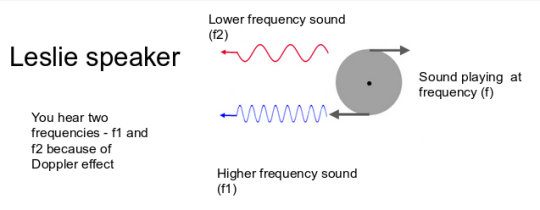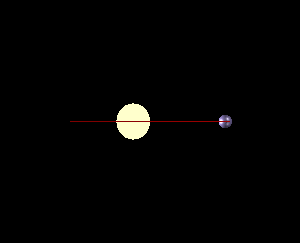#exoplanet findin
The Nobel Prize in Physics 2019 was awarded “for contributions to our understanding of the evolution of the universe and Earth’s place in the cosmos” with one half to James Peebles “for theoretical discoveries in physical cosmology”, the other half jointly to Michel Mayor and Didier Queloz “for the discovery of an exoplanet orbiting a solar-type star.”

In this post we will try to understand how Michel Mayor and Didier Queloz discovered the first ever exoplanet - 51 Pegasi b . Let’s first take the example of a Leslie speaker.
Leslie Speaker
This speaker has two horns from which the sound emerges out,

The two horns are placed on a rotating platform which can spun at high speeds.

Therefore, if you play a tone at frequency ‘f’ and begin to spin the horns, you can make the listener hear a higher frequency(f1) and a lower frequency tone(f2) instead of ‘f’.
If the horns stop spinning, the listener will only hear frequency ‘f’ .
This is due to the Doppler Effect and leads to some really cool sound effects. This video offers a great demo around the 7:30 mark:
Planet or no planet?
In our solar system the Sun, Earth, and all of the planets in the solar system orbit around a point called the barycenter. This is where the center of the mass of the solar system lies at :

This means that the motion of the sun and jupiter looks like so:

Top and side view (exaggerated for more clarity)

This same ‘wobbling’ idea applies to planets revolving other stars as well (called ‘Exoplanets’).
The star moves around in a circle like the horns of a Leslie speaker.
The spectrum of the star when it is moving towards us would be doppler shifted to a higher frequency and when the star is moving away would be doppler shifted to a lower frequency!

Measuring this wobble is one way to find whether a planet is orbiting the star or not.
Michel Mayor and Didier Queloz were awarded the Nobel prize for their discovery of 51-Pegasi b, an ‘exoplanet’ orbiting a sun-like star 51-Pegasi using this technique.
When they published their results in 1995 it was the first exoplanet to be discovered.
Today more than 4,000 exoplanets are confirmed to be in orbit around other stars but their research definitely stands as the cornerstone in what has now become a field of its own.
Source of gifs:NASA , UOregon
* Check out other techniques to find exoplanets here.
